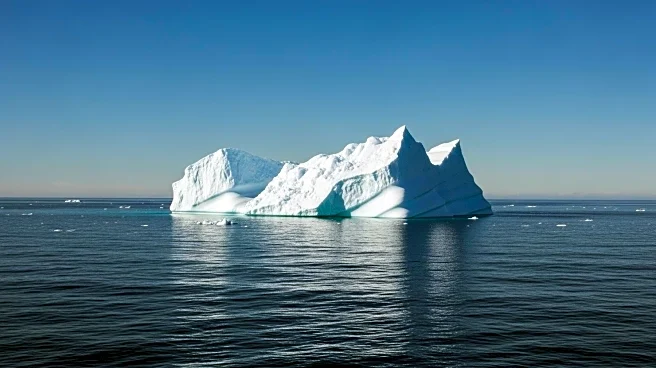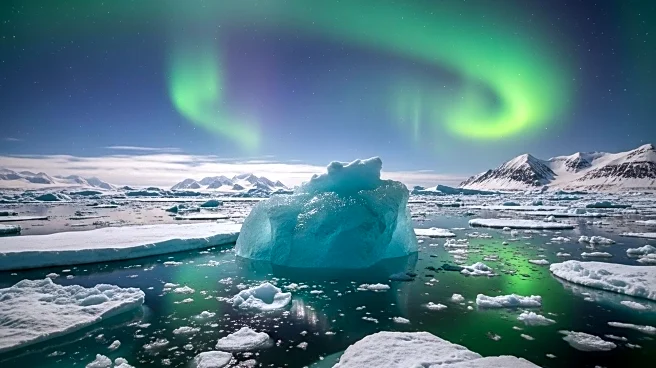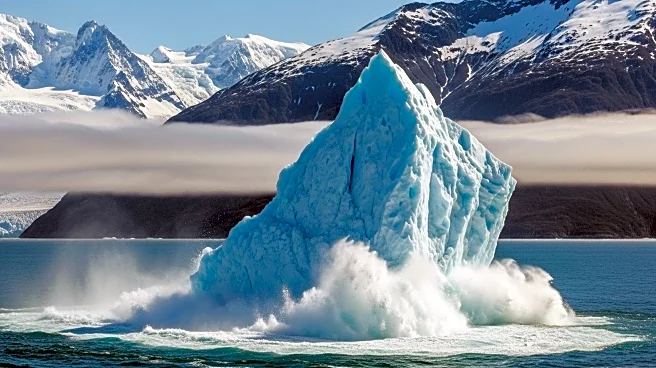What's Happening?
NASA has released a satellite image showing the rapid disintegration of Iceberg A-23a in Antarctica. Once the world's largest iceberg, A-23a has been shrinking significantly, losing about two-thirds of its area since it began drifting north from Antarctica. The iceberg, which originally spanned around 3,643 square kilometers, has now reduced to approximately 1,700 square kilometers. The disintegration is attributed to warmer air and water temperatures, which are part of a broader trend of ice mass loss in Antarctica and Greenland. This phenomenon contributes to global sea-level rise, as these ice sheets store a significant portion of the Earth's fresh water.
Why It's Important?
The disintegration of Iceberg A-23a highlights the ongoing impact of climate change on polar ice masses. As these ice sheets melt, they contribute to rising sea levels, which can have widespread implications for coastal communities and ecosystems worldwide. The loss of ice mass in Antarctica and Greenland is a critical indicator of global warming, emphasizing the need for continued monitoring and research in these regions. The situation underscores the urgency of addressing climate change to mitigate its effects on the environment and human societies.










